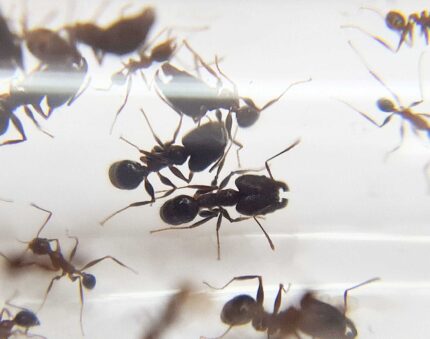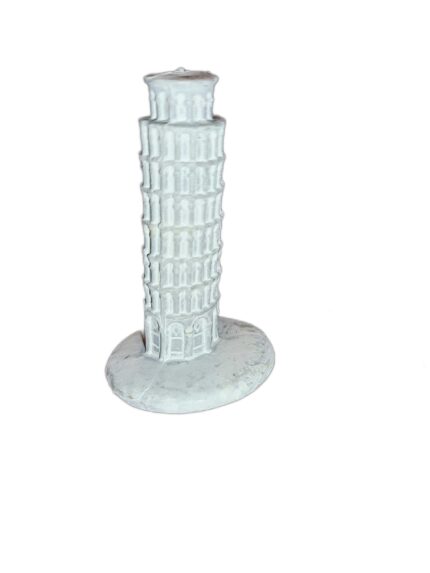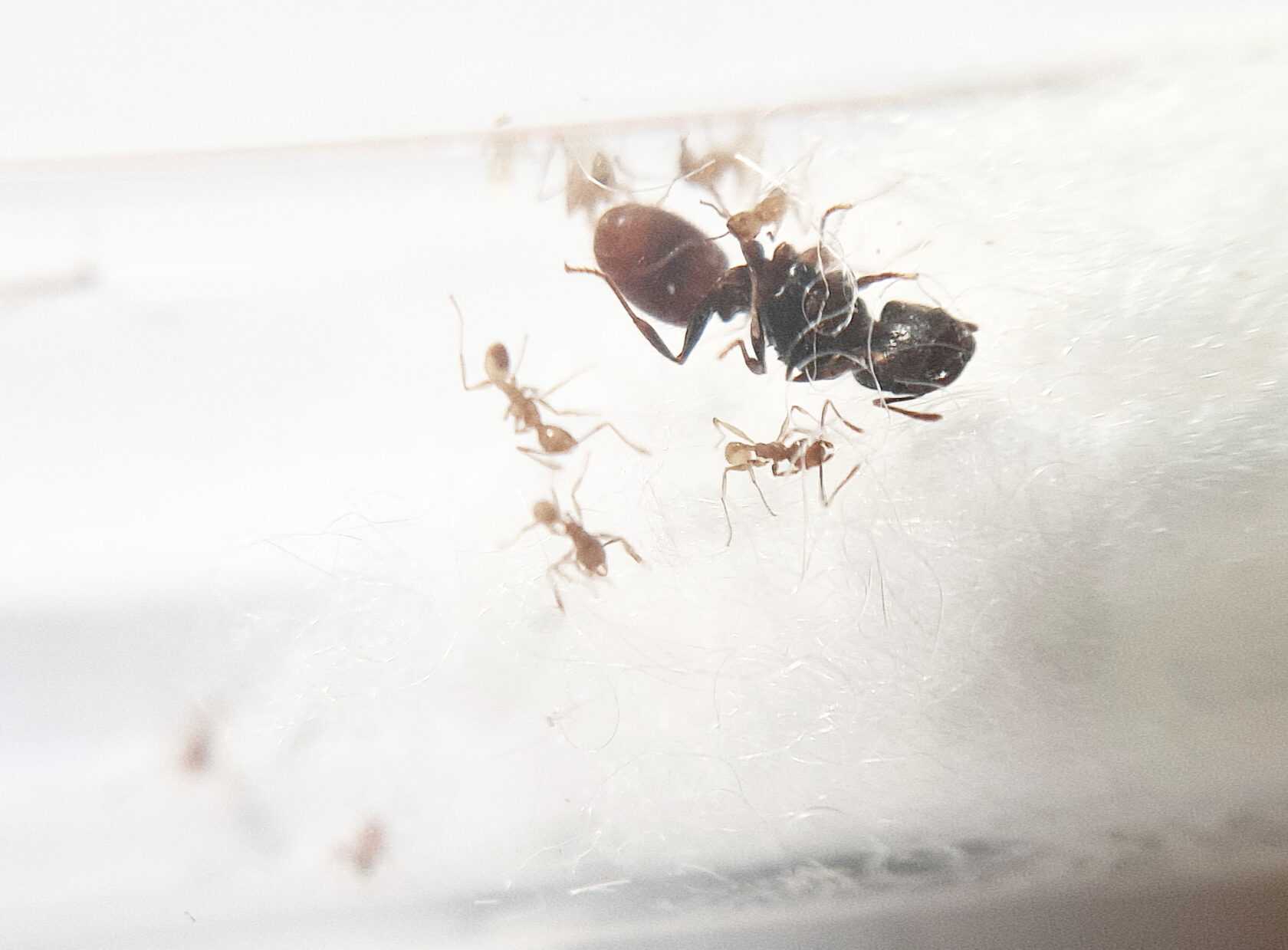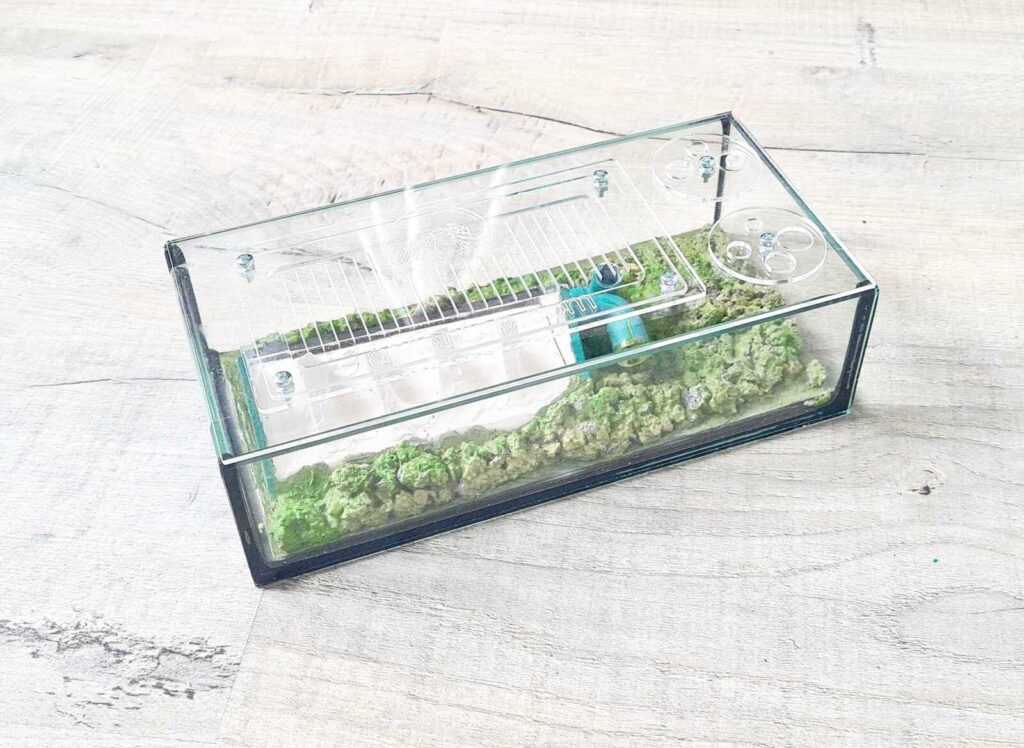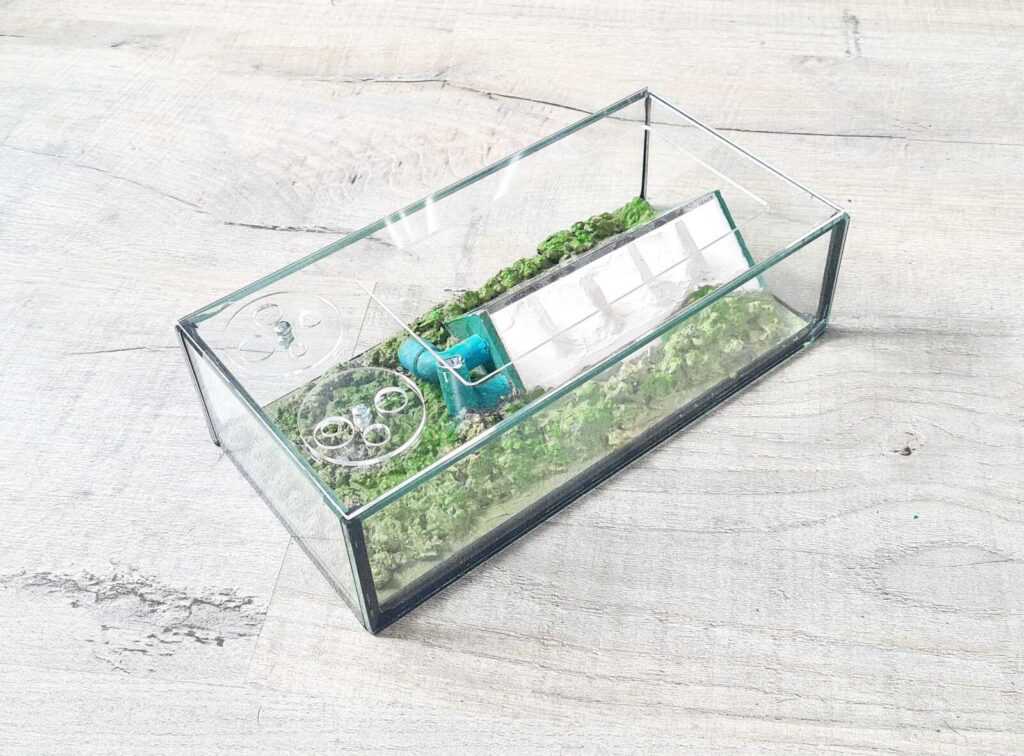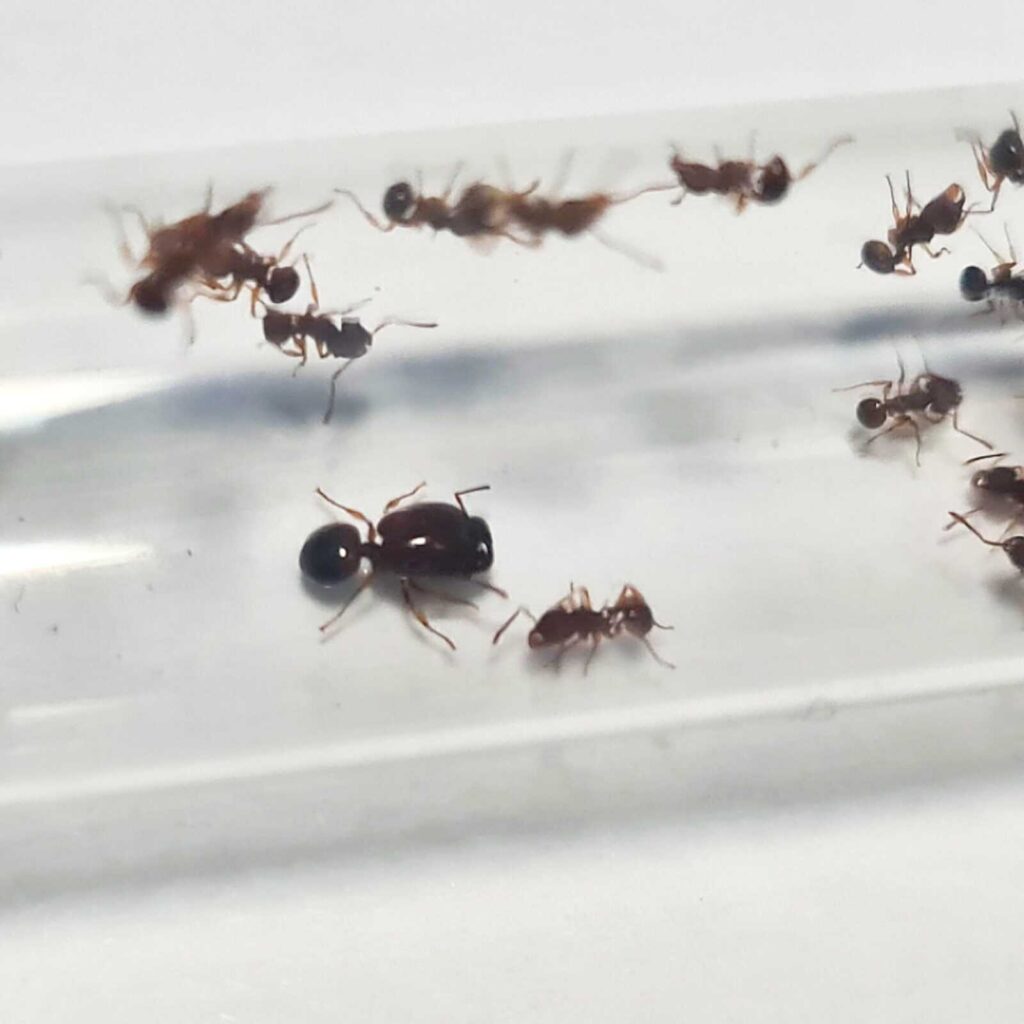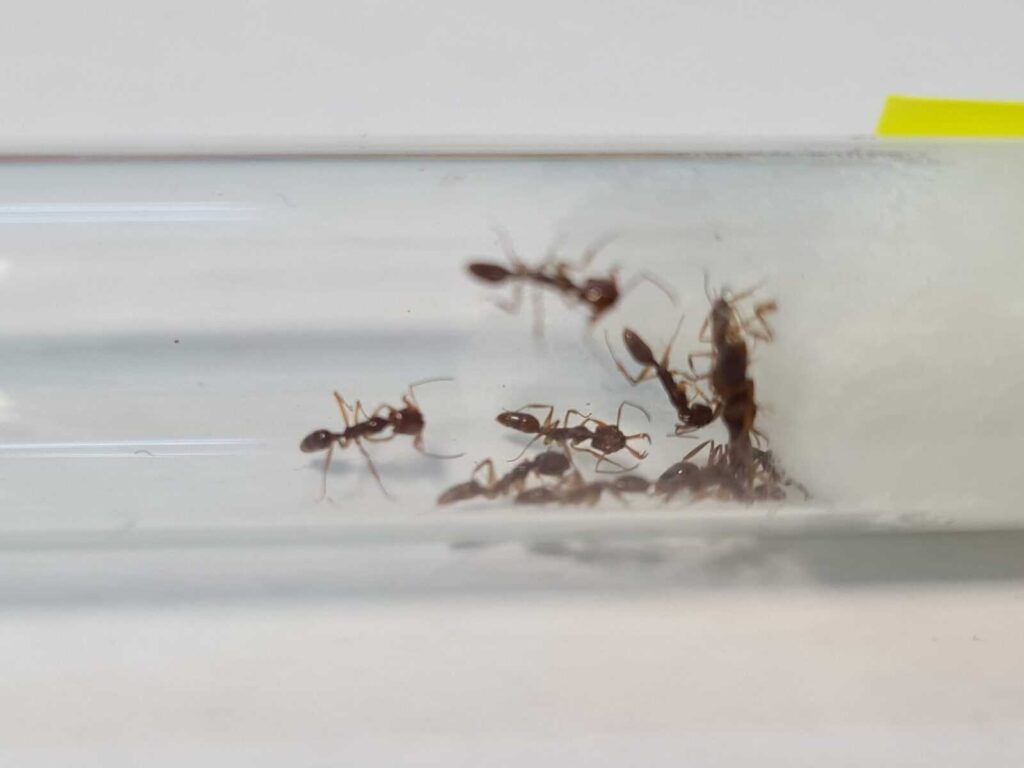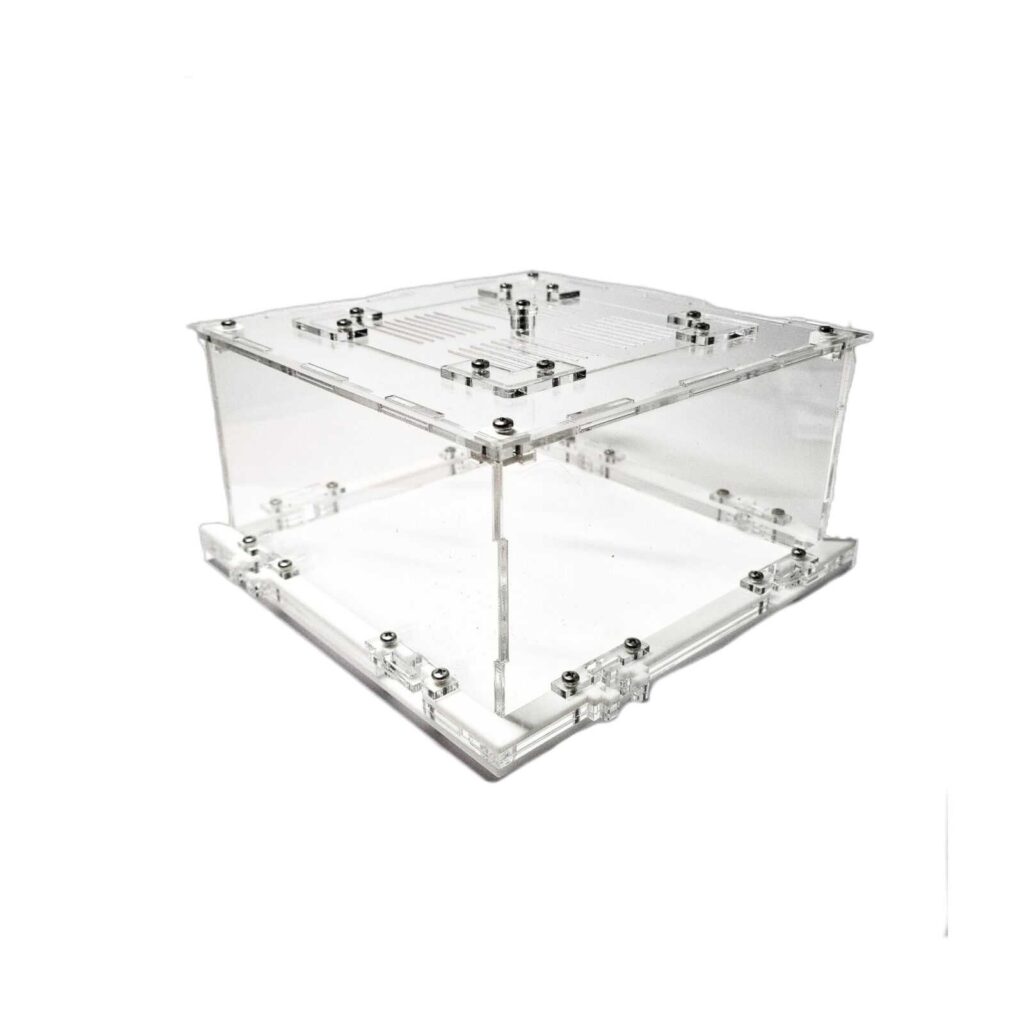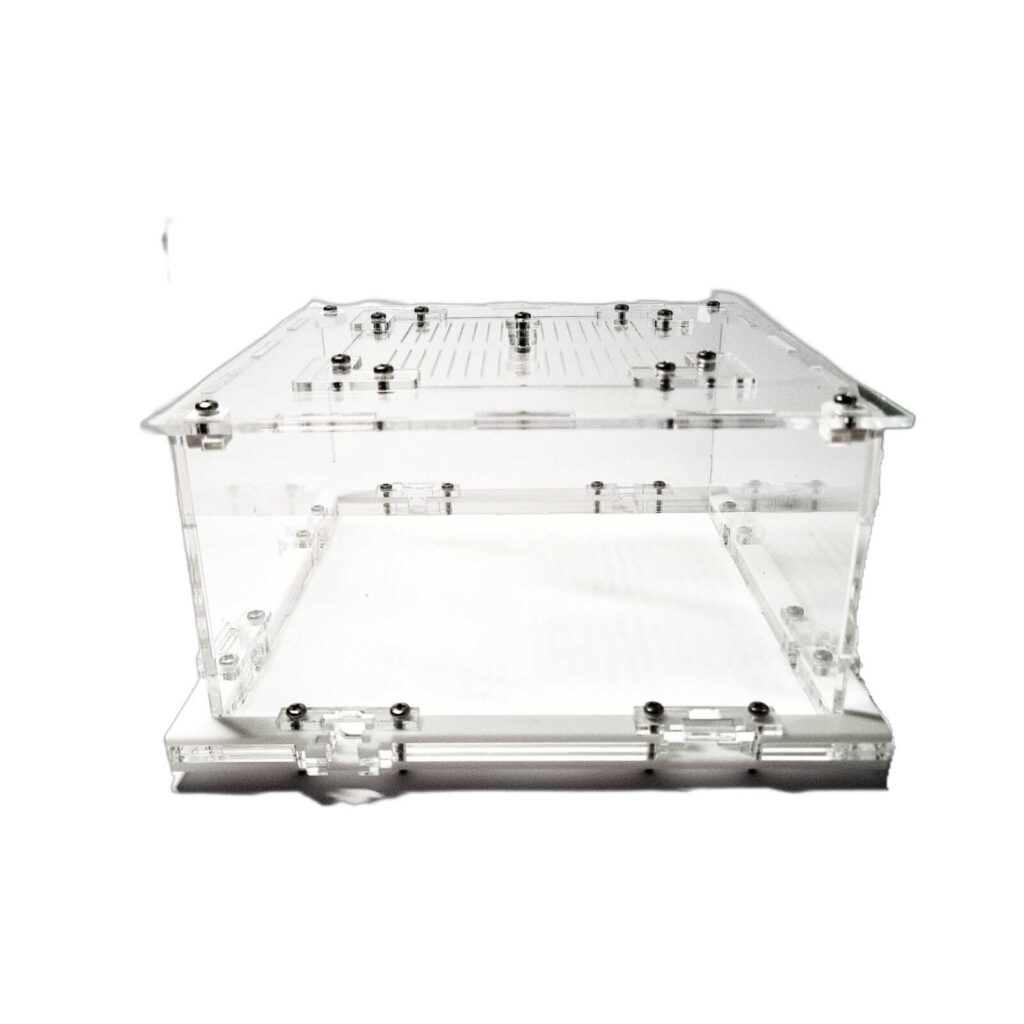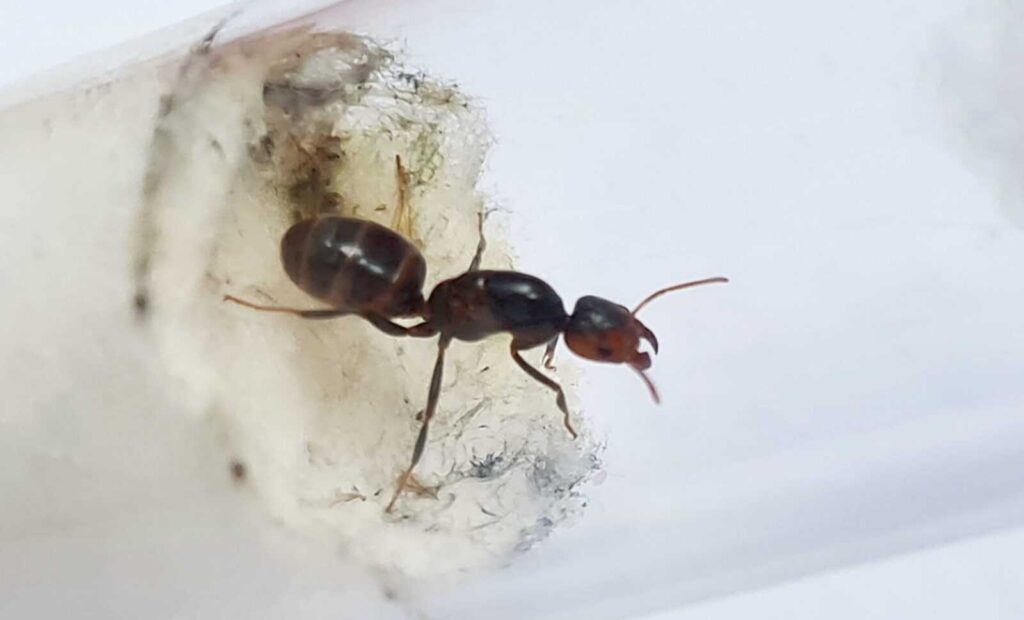Pheidole vulgaris
179,90 zł
Worldwide shipping
Free delivery over 500 PLN
The highest quality of goods
Live delivery guarantee
24/7 Personal Support
Fair Prices
Description
Pheidole vulgaris is a polygynous species with colonies reaching sizes of up to 50,000 workers. They have a fast development speed. The queen measures 7-9 mm, workers measure 2.5-4 mm, and majors measure 4.5-7 mm. Their color ranges from yellowish brown to black, with the queen having a red abdomen. They feed on insect food, syrup, fruits, vegetables, jelly, and honey-water mixtures.
Additional information
| Behavior | |
|---|---|
| Difficulty in breeding | |
| Origin | |
| The size of ants | |
| Wintering |
Pheidole vulgaris
Welcome to the world of Pheidole vulgaris, a fascinating ant species known for its small size, aggressive nature, and impressive colony size. In this product description, we will explore the key features and benefits of owning a Pheidole vulgaris colony, including their colony type, development speed, size, nutrition, humidity and temperature preferences, and recommended nests for breeding.
Colony Type and Size
Colony Type: Polygyny
Colony Size: Up to 50 000 workers
Development Speed: fast
Size and Color:
- Queen: 7-9 mm
- Workers: 2,5-4 mm
- Majors: 4,5-7 mm
The coloration of Pheidole vulgaris ants adds to their allure. The body color is predominantly yellowish-brown, whereas the queens exhibit a striking contrast with their black bodies and red abdomens.
Nutrition
- Food insects (such as cockroaches and crickets) dead, or live if colony is big
- Syrup (a mixture of water and honey or sugar, with a ratio of 4/3 water:1)
- Fruits and vegetables
- Jelly
- Cooked chicken without salt, shrimps
- Honey
- Seeds
Don’t forget to check out our food products to ensure a well-balanced diet for your colony!
Humidity and Temperature
- Humidity: Arena: 50-70%, Nest: 50-80%
- Temperature: Arena: 22-30 °C, Nest: 22-27 °C
Species Feature
Pheidole vulgaris ants are not only small in size but also possess a remarkable trait – they can consume grains. This unique dietary habit sets them apart from many other ant species and can be an interesting addition to observing their foraging behavior.
Recommended Nests for Breeding
Providing a suitable nest for breeding is crucial for the well-being and expansion of a Pheidole vulgaris colony. The following nest types are recommended:
- Acrylic Nests: These nests offer visibility and ease of maintenance, allowing you to observe the ants’ activities and clean the nest effectively.
- Gypsum Nests: Gypsum nests provide a more natural and aesthetically appealing environment for the ants. They offer good humidity retention, promoting the ants’ comfort and well-being.
- Aerated Concrete Nests: Aerated concrete nests are known for their durability and excellent insulating properties. They help maintain stable temperatures and humidity levels, creating an optimal living space for the ants.
- Digfix
By selecting the right nest type, you can provide your Pheidole vulgaris colony with a comfortable and secure home, enabling them to thrive and reach their full potential.
In conclusion, Pheidole vulgaris is an intriguing ant species, brimming with unique features and benefits. From their polygynous colony structure and fast development speed to their captivating colors and dietary habits, these ants offer a fulfilling and educational ant-keeping experience. By providing them with the right nutrition, maintaining the appropriate humidity and temperature levels, and selecting suitable nests for breeding, you can ensure the longevity and success of your Pheidole vulgaris colony.


